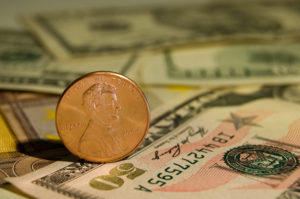Greed. The need for greed, the need to acquire more even when logic – or wisdom or good ethics might suggest otherwise is a powerful magnet. The unethical, those without scruples and the desire  to take advantage of the desperate, have time and time again gone to the penny stock well to rope in the greedy. All this creates bad ethics, one penny at a time!
to take advantage of the desperate, have time and time again gone to the penny stock well to rope in the greedy. All this creates bad ethics, one penny at a time!
Pump-and-Dump
The scheme is always simple enough, and can be traced back to when people roamed the earth with clubs and wagon wheels made of stone. You take something with almost no value, hype it by any means at your disposal, sell it, then take the profits and run. Over time, the “pump-and-dump” schemes have gotten more sophisticated but at the heart of it all, unethical people devise methods to separate greedy people from their money. The penny stock game is bad ethics just ask the “Wolf of Wall Street.”
The are called “Penny Stocks,” and their value is literally pennies per share. Companies decide to raise money by going public and it is all well and good if there is any underlying value. In the case of penny stocks, there is typically no value at all. I have seen hundreds, if not thousands of penny stock “plays” and the stocks, valued at perhaps $.05 or $.15 cents per share, represent companies that often have no technology to offer, no viable product and no ethical management. They hype a great deal, and hype is almost always their main product or service and that is a receipe for bad ethics.
Who can it hurt you may ask? Let’s first of all be clear. Companies that issue penny stocks to fund themselves offer millions of shares to the public. Tens of millions. People rarely buy one share, or even 100. They buy 1,000 or 10,000 shares – or more. In fact, they are encouraged to do so by the hype machine. The stocks are not traded on legitimate stock exchanges, but “on the sheets,” as they are called, places where “Bid” and “Ask” prices are quoted.
Over the years, many penny stock companies, brokers and penny stock hypsters have been shut down. They keep popping back up because the unethical keep emerging from the slime.
Songkram “Roy” Sahachaisere
Songkram “Roy” Sahachaisere was just sentenced to more than two years in prison for a $100 million penny stock scam. “Roy” owned an investor relations (IR) firm called Investsource Inc. An investor relations firm promotes stocks in the same way a public relations firm might promote toothpaste, honey or Chevrolets. Some IR firms are legitimate while others are crooks, catering to greed and the promotion of completely worthless stocks. Investsource promoted worthless penny stocks, stocks they knew had essentially no value. Helping “Roy” was Gary Kershner, an Arizona business owner and financial writer who wrote press releases to hype the various penny stocks. He made up stories about deals that never existed.
However, much more than fictionalized stories were being spun. As penny stocks are publicly traded, the SEC and other agencies came into play. For example, when fraud occurs, the FBI also becomes involved. Bad ethics tends to bring out the Feds.
To make a market requires money. Sandy Winick, a Canadian and the scheme’s penny stock hyping mastermind, along with a half-dozen insiders would infuse a penny stock with pumped-up investment capitol based on Songkram “Roy” Sahachaisere’s investor relations activities and Gary Kershner’s fake news stories. The stock would rise, and Roy’s firm started to pitch the penny stock to greedy investors. The investors were mainly from Canada, Britain, Thailand (Songkram “Roy” Sahachaisere’s home country) and China, but in fact from as many as a total of 35 countries.
Based on the fabricated news and the capitol being pumped into each penny stock, the worthless stocks would rise dramatically in value. Sandy Winick and the insiders, along with “Roy” and Kershner would then pull out (or dump their millions of shares), take the profits, and watch as the penny stocks fell through the trading floor.
Rationalization
It is not hard to imagine the various elements that led to the rationalization in this fraud. For “Roy” and Kershner, this was no more than harmless hype. They imagined that all they were doing was pitching a story (albeit a fake story). After all, they must have imagined, who could get hurt from buying a $.20 stock? The problem is they knew they were suckering investors.
Those who pumped money in and then pulled it out, rationalized the investors as greedy gamblers, no different than people who play the penny slots in ‘Vegas.
Finally, the investors must have rationalized that they had little to lose. They may have bought a few thousand shares when it was very low, and perhaps they bought many more thousands of shares when the stock was gaining in value (before it fell). They could rationalize, “Well, I got greedy, it was my fault.” The problem was, they were investing on air; they had invested in nothing, manipulated by those who had no sense of ethics or honesty. All in all…this is nothing more than Bad Ethics.
YOUR COMMENTS ARE WELCOME!



Chuck what was the fate of Gary Kersner? Paul
He’s in Prison right now Paul
https://www.justice.gov/usao-edny/pr/two-convicted-participating-95-million-international-market-manipulation-scheme